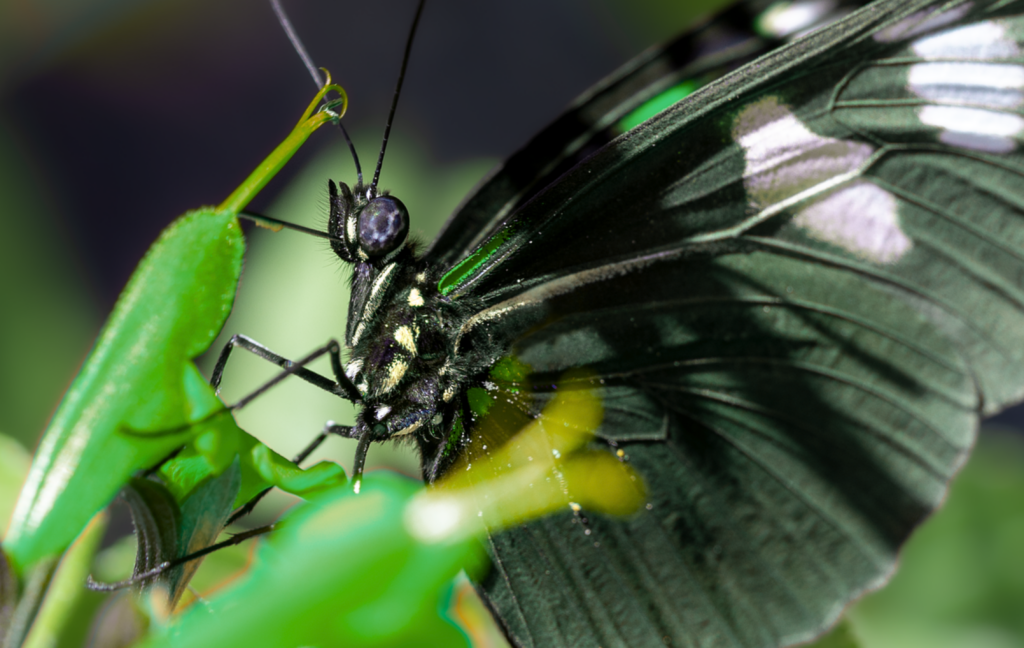If you’ve spotted some colourful monarch butterflies, or furry winged creatures flittering about your garden, you might wonder if… are butterflies good for lawns?
The short answer is yes! You have nothing to worry about.
Attracting Butterflies
We reckon attracting butterflies to your garden is a good thing.
Britain has 59 species of butterfly – if your garden has flowers and plants (even if it’s on the smaller side, or a new-build that’s not known to your local butterflies just yet) they will find it!
You can attract butterflies to your garden by cultivating flowers and safe habitats, which means planting nectar-rich flowers. Bluebells, sunflowers, lavender and primrose are great choices to attract butterflies.
To get ready for butterflies, you need to encourage caterpillars to visit you. Providing food for caterpillars can help, with English butterfly species having a few preferences when it comes to flowers and plants that can host their young.
Whilst butterflies enjoy nectar, caterpillars are prone to feasting on the leaves and buds of larval food plants such as common sorrel, holly, ivy, lady’s smock (which is great for moist soil), and fescue grass.
Caterpillars are also partial to nettles, but we won’t recommend cultivating them for your lawn, unless you live life on the edge and enjoy getting your ankles stung.
Benefits of Butterflies
If your garden boasts home-grown vegetables or fruit, these are cultivated by the hard-work of butterflies. Without cross-pollination, your home garden would probably see peppers and tomatoes suffering.
Butterflies are pollinators. They’re a fabulous addition to any bloom-aspirant garden, on top of being an indicator species. Indicator species are super sensitive to environmental changes, and a lack of them is the first sign an ecosystem isn’t doing too hot.
What to Avoid When Attracting Butterflies to Your Lawn
If you’re trying to make your lawn a safe-haven for butterflies, you’ll need to avoid pesticides and insecticides. Whilst aimed at pests such as mites, these sprays can also kill questions that are essential to your garden’s biodiversity. Avoid using these near flowering plants or shrubs, as they will kill butterflies, bees, and ladybirds.
We also advise avoiding weedkillers, as these can hurt caterpillars in two ways. Firstly, this can kill their food source, as they’re great at demolishing weeds. Secondly, these can hinder caterpillars.
To understand how different weeds spread, you can check out our guide on different weeds here.

The Negatives – are Butterflies Good for Your Garden?
One of the very few negatives is that a white cabbage butterfly might have a nibble on its namesake. Otherwise, our fluttery friends will most likely leave your fruit and vegetables in peace.
What’s Needed in Gardens for Butterflies to Appear
Grow your flowers in a sunny, but wind-sheltered spot. Butterflies relish basking in the sun, so nectar-rich flowers planted perfectly near hedges, bushes, or fences are a great spot.
Vertical gardens can also work for attracting butterflies, so long as they’re sheltered. Using trellis or wires to create a ladder to support climbing parts like honeysuckle or jasmine will attract bees, butterflies, and other pollinators in the Spring. You can be as creative as you like with then, with hanging gardens offering you the freedom to optimise a small amount of vertical space to compliment your lawn.
If you’re lucky enough to have fruit-yielding trees in your garden, if you leave fallen fruit beneath your trees, this may also cause butterflies to flock to them and feed on the sugary fruity goodness.
We’ve talked about butterflies happily basking in the sun – it reinvigorates them, and helps them keep aloft. Stepping stones, leafy plants and statues are all tempting places for a butterfly to sun itself.
Spring flowers are vital for butterflies as they leave hibernation. Don’t forget to generously water them as well.
We’ll keep our fingers crossed that some of these tips and trips help bring the butterflies to your lawn! And remember – if your flowers and plants aren’t growing as they should, we conduct a free soil analysis at the time of our surveys. To book in for one, head here to our famous Lawn Analysis Survey.





